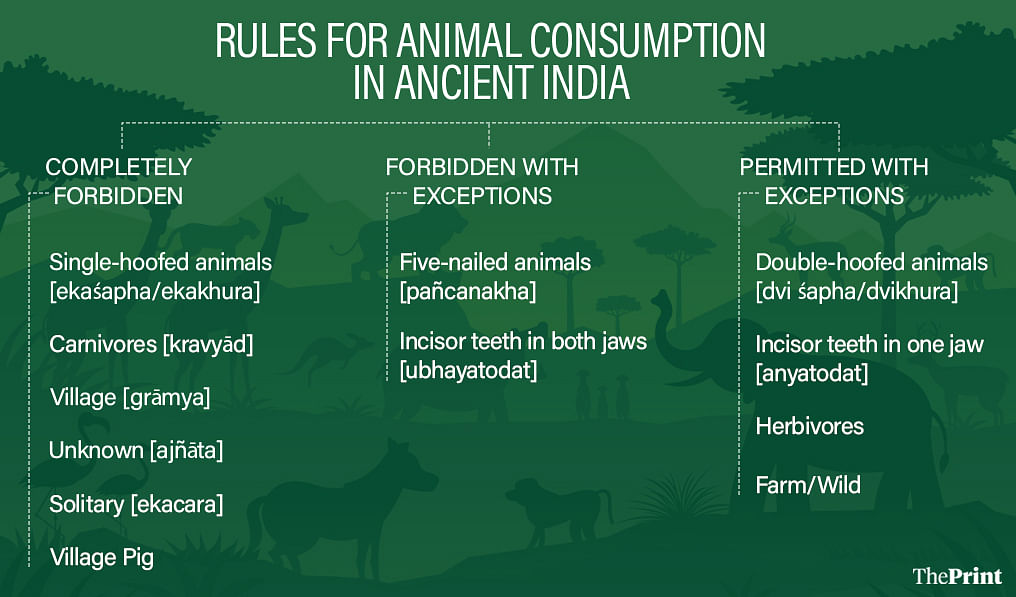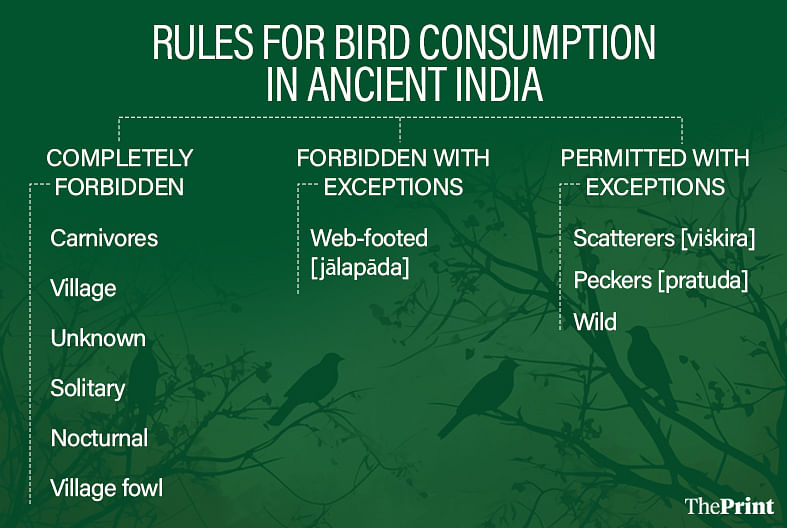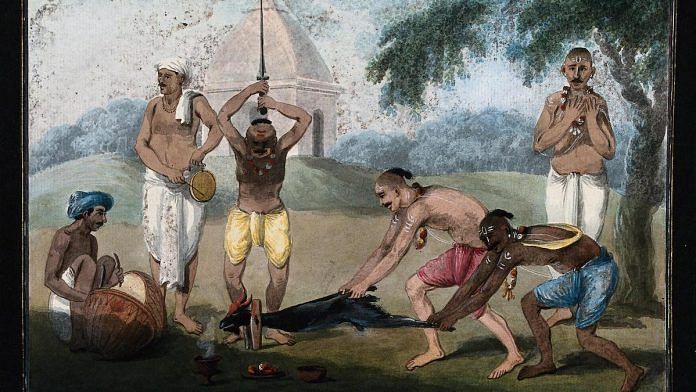In the memorable words of the eminent French anthropologist Claude Lévi Strauss, “Animals are good to think.” Indeed, we think with animals even when we are not thinking. The human classification of animals — which animals we are permitted to eat, and which are not — speaks to our social and moral identities. Dietary regulations define the boundaries of cultures, social groups, and religions. Kosher food defines the Jewish identity, as Halal defines the Muslim. Not eating pork defines both these religions of Middle Eastern origin. Insults often invoke food — the British call the French ‘froggies’ because frog legs are a French delicacy.
Recently, an American presidential candidate falsely accused Haitian immigrants of eating dogs and cats, a clear statement of their sub-human identity. People do not eat pets. Even the South Korean government obliged and banned the public slaughtering of dogs and the serving of dog meat in restaurants in Seoul prior to the Olympics held there in 1988.
There are, however, deeper and broader dietary rules in many cultures and religions. These rules are not haphazard collections of motley rules. They have an internal grammar that scholars have sought to understand and interpret. Interestingly, most such rules pertain to animals rather than vegetables, although vegetables also are governed by a few rules such as the prohibition of garlic, onion, and mushrooms in many traditions of India. The dietary rules relating to animals are based on a set of overlapping classifications.
Also read: Ancient Indian medical system had an image crisis. A new name fixed it
Ancient India’s dietary classifications
Jewish dietary rules are complex and well-articulated. They bear interesting and surprising parallels to the rules articulated in the ancient Indian Dharmashastras. For example, both classify edible animals according to their foot and dental structures. Edible animals have hoofs, as opposed to paws with nails, and the hoofs have to be cloven or split in two, called dvishapa or dvikhura in Sanskrit. Edible animals have only one set of incisor teeth—instead of incisors their upper jaws have dental pads. Such animals are called ekadanta, that is, having a single row of true teeth.
Another rule prohibits the consumption of carnivorous animals—you can’t eat the meat of an animal that eats meat. A further rule classifies animals according to their habitat: village and wilderness. Animals normally living in villages are forbidden, while their wild counterparts are sometimes permitted. So, the village fowl and village pigs are forbidden, while wildfowl and pigs are permitted.

Dietary rules with respect to birds are simpler, though extending to their mouths, feet, feeding habits, and habitats. With regard to feet and feeding habits, for example, web-footed birds are, with some exceptions, forbidden. These are mostly birds with watery habitats. Further, birds that scratch the soil with their feet as they search for food, as well as those that peck on tree barks and fruits, such as woodpeckers, are in general permitted.

Also read: Kautilya’s ‘Arthashastra’, Manu’s laws—Ancient India had rich literature on jurisprudence
Rules for fish, milk, animal consumption
Fish are more difficult to classify, and the sources are often vague and contradictory. They often resort to listing individual fish species as forbidden or permitted. Here, there’s an interesting change from the older to the younger sources. The older sources appear to assume that all fish, except those explicitly forbidden, may be eaten. The only broad category of forbidden fish in them is the rather vague one of misshapen or grotesque fish (vikrita). Manu and later writers, on the other hand, do not appear to favour the eating of fish. Indeed, in them the process is reversed; all fish except those listed are forbidden. Indeed, Manu (5.15) says: “A man who eats the meat of a particular animal is called ‘eater of that animal’s meat’, whereas a fish-eater is an ‘eater of every animal’s meat’. Therefore, he should avoid fish.”
Milk is the most restrictive of all food items. The milk of most animals—women and other five-nailed animals, single-hoofed animals such as mares, and even most animals with parted hooves such as sheep and deer—is explicitly forbidden. The only permitted milk is that of cows, buffaloes, and goats. An inexplicable omission in the dietary repertoire is eggs. Sources are silent on this topic. They neither prohibit nor permit them. If one assumes that eggs were available and consumed at least by some segments of ancient Indian society, then their consumption must have been non-controversial.
Anthropologists such as Mary Douglas and Stanley Thambiah have studied how dietary restrictions are related to the cosmology and social organisation of a particular culture and society. Dietary boundaries parallel cosmological boundaries. A central classification of space in ancient India is the distinction between village (grama) and wilderness (aranya).
Animals also follow that classification. The habitat of permitted animals, furthermore, establishes the principle that one eats only animals that live outside their domicile. You don’t eat your fellow villagers. In some sense, ‘village animal’ approximates animals that are classified today as pets. So, animals living in villages, whether they are birds, fowl, or pigs, are out of bounds. Permitted animals live outside villages, either in wild tracts or forests or in farms away from villages. Thus, the paradigmatic edible animals are farm animals referred to as pashu (goats, sheep, cattle) and wild animals, especially deer (mriga). The physiology of these paradigmatic edible animals is used in animal classification within dietary rules. All farm animals have double hooves and have true teeth only in the lower jaws. This anatomical feature is then extended to the dietary rule: one can eat only animals with double hooves and one set of true teeth.
At one level, vegetables are the most common and paradigmatic of foods. According to a doctrine of rebirth articulated in the Upanishads (Chandogya Upanishad 5.4–9), a dead person rises up as the smoke of cremation, goes to the heavenly worlds of the sun and the moon, and returns in the form of rain. The rainwater is absorbed by plants, and when these are eaten by a man, they are transformed into semen and deposited in a woman to take a new birth. This rebirth theory takes into account only the eating of vegetables, meat eating is outside its purview.
Also read:
The grammar of dietary rules
As is now evident, there are very few dietary restrictions around vegetables. Restrictions increase as we go up the food chain. There’s a detectable ‘bottom line’ in these restrictions: all land animals, birds, and fish that eat other animals rather than vegetables are strictly forbidden. Thus, beyond the vegetable kingdom, the paradigmatic food is the meat of vegetarian animals.
Anthropologists such as Stanley Tambiah have drawn fascinating and significant parallels between which animals one is permitted to eat in a particular society and which women and men of that society are permitted to marry. ‘Not too close and not too far’ seems to be the guiding principle in both. Dietary rules give us a ‘grammar’ that helps us understand the inner mechanism of a society. It is, however, difficult to convert that grammar into an intelligible syntax, especially because the rules are always evolving and changing with time.
By at least the beginning of the common era, not eating meat at all emerged as the most dharmic dietary restriction. Connected with the ethical principle of ahimsa, vegetarianism emerged in several religions, especially Jainism. It spread to Brahmanism as well. After explaining all the rules about forbidden and permitted animals, Manu says: “One can never obtain meat without causing injury to living beings, and killing living beings is an impediment to heaven; he should, therefore, abstain from meat” (5.48). And yet he concedes: “There is no fault in eating meat, in drinking liquor, or in having sex; that is the natural activity of creatures. Abstaining from such activity, however, brings great rewards” (5.56). Manu’s advice and the central moral principle of ahimsa in all Indian religions appear to have struck a chord. Vegetarianism, at least in principle, went mainstream in India.
FURTHER READINGS:
P. Olivelle, Food for Thought: Dietary Rules and Social Organization in Ancient India. Amsterdam: Royal Netherlands Academy of Arts and Sciences, 2002.
B.K. Smith, ‘Eaters, Food, and social Hierarchy in Ancient India: A Dietary Guide to a Revolution in Values.’ Journal of the American Academy of Religion 48(1990): 177–205.
S. J. Tambiah, ‘Animals are Good to Think and Good to Prohibit.’ Ethnology 8 (1969): 423–459.
Patrick Olivelle is Professor Emeritus of Asian Studies at the University of Texas at Austin. He is known for his work on early Indian religions, law, and statecraft. Views are personal.
(Edited by Zoya Bhatti)






